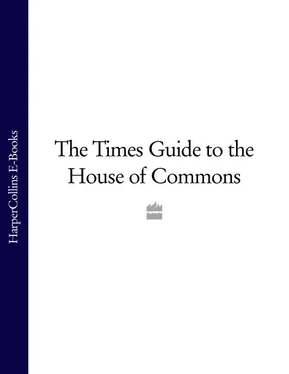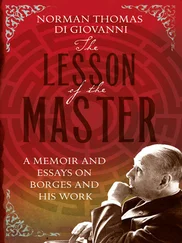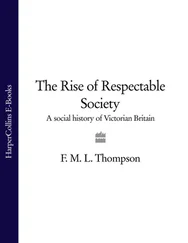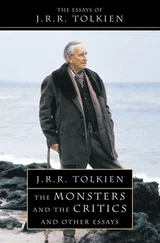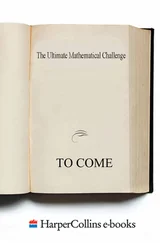Later, when he was leader, Mr Cameron was often asked when he would have a Clause Four moment, a reference to Tony Blair’s totemic defeat of party critics. His answer was always a version of that first, raw, draft. The riposte might be caricatured as: “We’re right, it’s just that the voters don’t realise it yet.”
Although he backed Mr Portillo, the modernisers’ candidate in the 2001 leadership election, the support was hesitant, even knowing. When Mr Portillo lost in an early round, the new Witney MP opted for Mr Duncan Smith over Kenneth Clarke. “What went wrong?” Mr Cameron mused in an online column. “Here was a leadership contender with buckets of charisma, a CV that included experience at the highest level of government and genuine cross-party appeal. Our man had offered leadership, radical change and ideas that challenged the party both in Parliament and the country. They simply weren’t ready for it. In many ways it is view that I share.”
Mr Cameron’s early career as a backbencher is not littered with examples of him acting as a spokesman for the need for the party to broaden its appeal. He was, for example, a passionate defender of fox-hunting. (In fairness, he also took a brave and principled position on the decriminalisation of drugs.) Gradually, however, and partly as a result of a developing friendship with Mr Osborne, Mr Cameron started to think more deeply about what was needed, and in particular what a “clear, positive, engaging agenda on public services” might look like.
At the same time, Mr Cameron was receiving firsthand experience of the NHS as it cared for his son, who was born with Ohtahara syndrome, a serious neurological condition. If the Tories were really going to modernise, Mr Cameron came to realise, they had to embrace properly funded, high-quality, universally available public services. Michael Gove, then a journalist with The Times , Mr Hilton, Mr Osborne and others began to meet regularly in a Mayfair restaurant to plot a Conservative future.
There was still time to test to destruction the alternative model. Mr Howard, who replaced the ousted Mr Duncan Smith in 2003, flirted with a full-throated modernisation but came to view it as unauthentic, at least in his mouth, and opted like Mr Hague for a safety-first “core-vote” strategy in the 2005 election.
Mr Cameron, who with Mr Gove helped to patch together the party’s manifesto, saw at first hand the consequences of limiting Tory appeal to existing supporters. Mr Cameron, then, emerged from another election disaster surrounded by two long-term friends, Mr Hilton and Mr Gove, and one newer ally, Mr Osborne. It was, however, someone he had known longer than any of them that pushed him hardest to run for the leadership. Andrew Feldman, a friend since Brasenose College, Oxford, set up the key meeting with Lord Harris of Peckham, a former Conservative treasurer, that helped to convince him to contest the leadership. Mr Feldman, who was later appointed chief executive of the party and then co-chairman, is an important, although non-political, member of the inner circle.
There were others who might have led the modernisers’ charge against David Davis in 2005. Andrew Lansley, David Willetts, Francis Maude, even Oliver Letwin, had all, at various times, held the mantle. Mr Osborne, had he been a little older and a little more confident, might have challenged Mr Cameron’s right to present the case. But he could see that Mr Cameron was exactly the reassuring figure that the party’s grassroots would trust to carry out the sort of radical changes that were needed to restore the party’s electoral fortunes. Together with Mr Hilton, the pair crafted a leadership campaign that balanced the modernising creed with a traditional message on the family. It was Mr Cameron’s star performance in hustings at the Conservative Party conference in Blackpool, however, that landed him the job. He beat Mr Davis by a margin of two to one: 134,446 to 64,398.
Veterans of the early days of Mr Cameron’s stint as Leader of the Opposition wonder, however, how they avoided disaster. It was not that the Tory leader lacked a solid backroom team: he had in Ed Llewellyn and Catherine Fall two long-term friends for his chief of staff and deputy chief of staff, and another former colleague reporting for duty was George Bridges. It was that the sheer, exuberant energy of the creative talents of Mr Hilton and Mr Letwin, coupled with Mr Cameron’s own inexperience and a general lack of organisational clarity, led to some hair-raising scrapes.
A fascinated and largely supportive media did not seem to notice, at least at first, as it lapped up the youthful leader. The environment provided the theme and the backdrops for an initial repositioning. Carefully crafted photo-opportunities, the most famous involving dog-sledding in the Arctic Circle, challenged voters’ preconceptions about what a Conservative leader looked like. Even the party’s slogan in the 2006 council election – Vote Blue, Go Green – seemed designed to blur former associations.
The Conservative grassroots were a tougher audience, particularly on the sensitive issue of candidate selection. Local associations had seen off previous attempts to dilute their power to select representatives but the new leader knew that, if he was to make the party look more like modern Britain, this was a battle he had to win. His first attempt, the creation of a 100-strong “A-list” of preferred candidates, was a crass but ultimately effective opening gambit. In the new Parliament there are 48 women Conservative MPs and 11 who are black or from other ethnic minorities. In the previous Parliament there were just eight women and two non-white MPs on the Conservative benches.
But while candidate selection was a fight that Mr Cameron knew he had to have with his grassroots, the defining battle of this period was one that he did not mean to pick. Ill-judged briefing around the issue of grammar schools in May 2007 brought resentment over Mr Cameron’s leadership to the surface among activists and MPs. That an Old Etonian was setting his face against state-funded selective education provided the first opportunity for critics to wheel out the issue of his class. Mr Cameron first tried to escalate the crisis making it a “key test” to establish whether it wanted just to be a “right-wing debating society”. When the backlash grew fiercer, Mr Cameron made a tactical retreat. It was the start of an uncomfortable summer, the low point of his leadership in opposition. An increasingly restive party, Mr Brown’s arrival in No 10 and the threat of an early election pushed the Tory leader to the right. Issues such as crime and immigration, deliberately ignored for two years, were foreshadowed.
Here Mr Cameron again showed his skills as a political communicator and the advantage of his youth. A thoughtful speech against multiculturalism won the distinction of an endorsement by Trevor Phillips, head of the new Equality and Human Rights Commission. Similarly, concerns about law and order were framed in the language of social justice. The emphasis was on the impact of crime, antisocial behaviour or welfare dependency on low-income households rather their better-off neighbours.
It took a straightforwardly old-fashioned Tory tax break, the offer to increase inheritance tax to a threshold of more than £1 million, to provide the Conservatives with the momentum at that year’s conference to scare Mr Brown away from going to the country. As the Conservatives began to enjoy huge poll leads after that disastrous miscalculation by Labour, it seemed to Mr Cameron and his inner circle that he had at last resolved the party’s brand problems. Mr Cameron could use the full palette of issues without being accused of lurching to the right. Even Nick Clegg’s arrival as the new Lib Dem leader, another youthful leader offering change, failed to make a significant impact on poll ratings that seemed to pave a sure path to No 10.
Читать дальше
